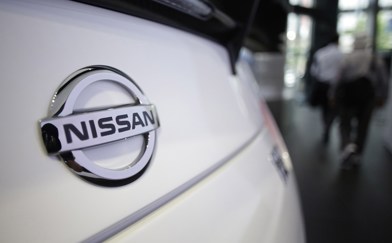Sponsored by Maserati

Maserati S.p.A was established on December 1, 1914, in Bologna, Italy, but the legend of Maserati started well before that, with the Maserati brothers Carlo, Bindo, Alfieri, Mario, Ettore and Ernesto all deeply involved in cars and motor racing from the turn of the century, in essence since the birth of the modern motor car itself.
All Maserati brothers were engineers, with the exception of Mario. He went off to Milan to become an artist, but such was the entire family’s enthusiasm for the motor car, Mario too played an integral role in the legend that would become Maserati – he designed the iconic trident logo that proudly adorns the nose of every Maserati 110 years later.
Of course, being founded by five engineers and an artist in one of the most beautiful cities in Italy would strongly suggest that the cars Maserati would create would not only be very fast, but also impossibly beautiful.
And so that proved to be, with Maserati going on to have major racing success in the ensuing years, including what is generally agreed to be the most spectacular culmination to a Formula One world championship when Argentinian legend Juan Manuel Fangio, driving the Maserati 250F, broke the lap record at the formidable Nürburgring Nordschleife 10 times in 22 laps to take the lead on the very last lap, winning the race and the 1957 championship.
While the 250F may have been the pinnacle of Maserati in terms of racing success and performance during that time, it was also one of the most beautiful racing cars ever to turn a wheel in anger, something that has been as much of a Maserati hallmark as its racing success.
When Maserati withdrew from racing in 1957, it would turn its attention to road-going cars in typically spectacular fashion with the release of what is considered to be one of the most beautiful road cars of all time; the Maserati 3500 GT.
Maserati’s first serious attempt at a mass-produced road car (it had previously built the road-going A6 grand tourers, but only in very small runs), the 3500 GT was a stunning 2+2 coupe or 2-seater roadster that was powered by the company’s 3.5-litre inline six-cylinder engine and utilised a Superlegga (super-light) tube chassis.
The spectacular 3500 GT kicked off an era of beautiful high performance road cars that continues to this day, with the latest in that line of stunning cars being the GranTurismo coupe and its convertible variant, the GranCabrio.
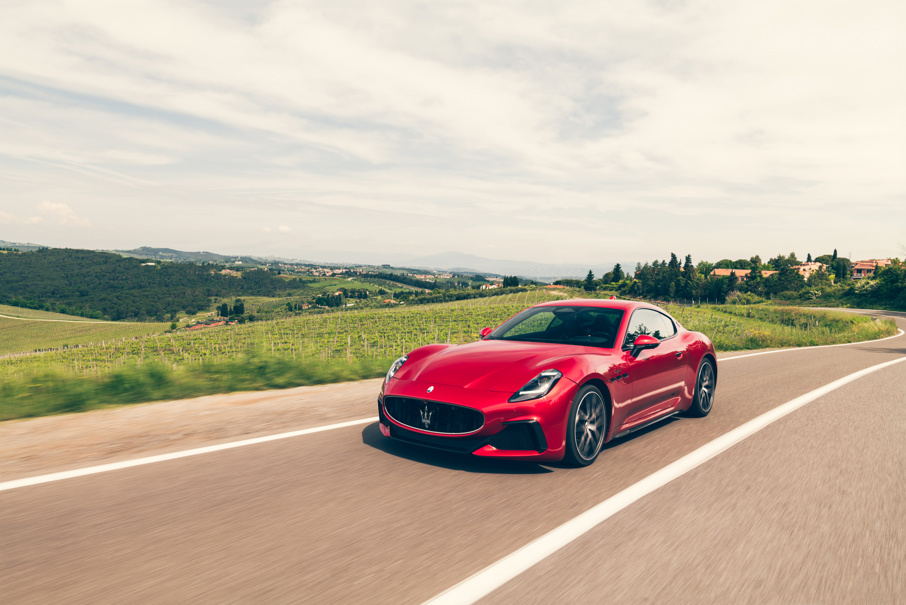
The new GranTurismo and GranCabrio blend the timeless elegance of their predecessors with cutting-edge technology and the very essence of Italian automotive artistry with a design that is a harmonious blend of flowing lines and muscular proportions, creating a graceful, yet powerful silhouette. The long, low profile boasts a gently sloping roofline that extends into a sleek, truncated rear end; the classic long nose/short tail proportions that are the very definition of a high-performance grand tourer.
While the sculpted sides and prominent wheel arches accentuate the car’s athletic stance, the rear is defined by a clean design with slim, horizontal taillights and a subtle rear diffuser that emphasises the car’s serious performance credentials. The front fascia features Maserati’s iconic trident emblem prominently displayed on a larger, more aggressive grille that is flanked by LED matrix headlights, giving the car an unmistakably contemporary look while still retaining an undeniable link to Maserati’s past.
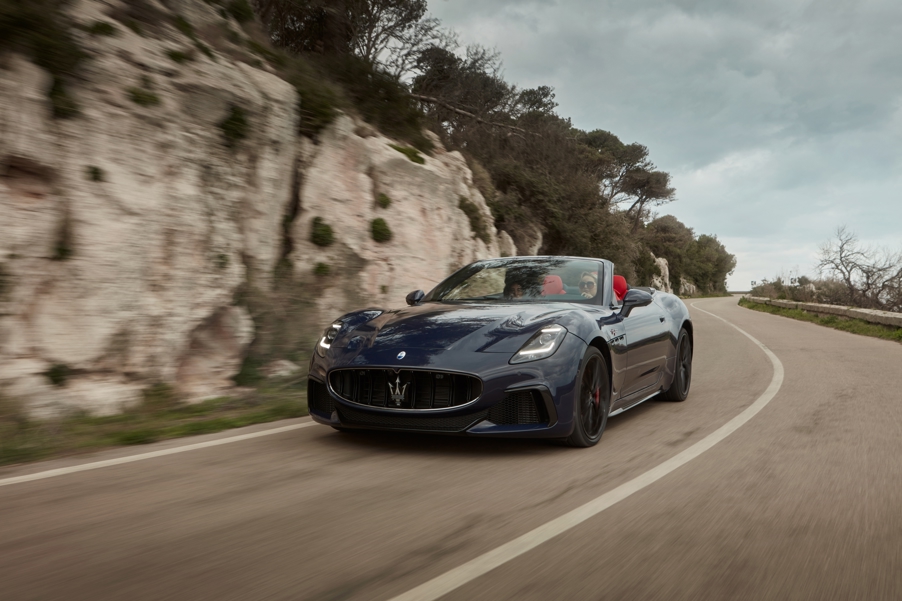
Inside the cabin luxury and craftsmanship take centre stage with the cabin featuring an exquisite mix of premium materials, including leather, Alcantara, and carbon fibre, and a driver-centric layout that ensures all controls are within easy reach.
The interior design focuses on providing both driver and passengers with an unparalleled level of comfort and luxury, with seats that are ergonomically designed, offering excellent support during spirited driving while remaining comfortable on long trips.
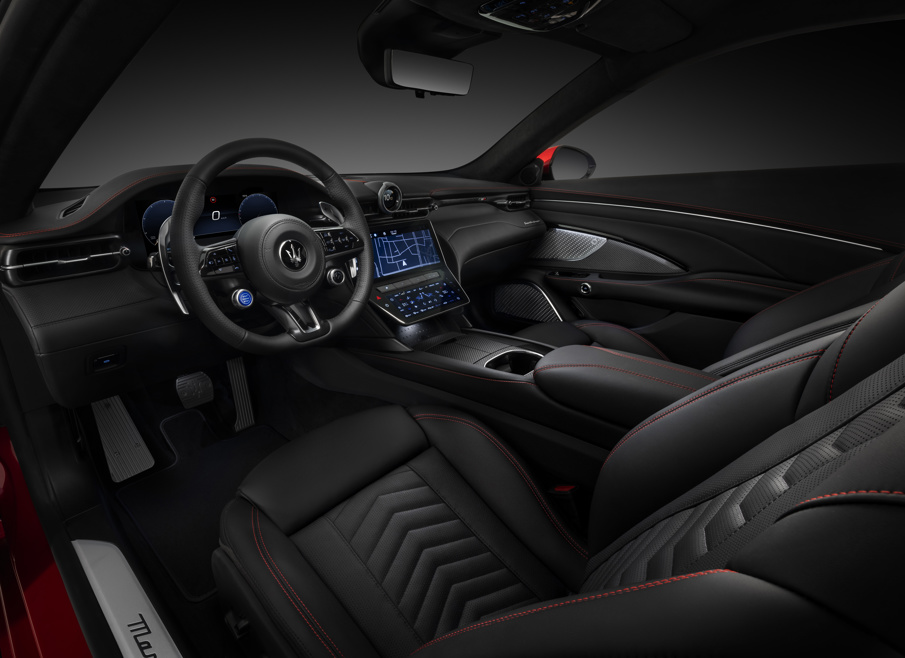
Technological advancements are at the forefront of the new GranTurismo’s interior. The centerpiece of the dashboard is a large, high-resolution touchscreen infotainment system that offers seamless connectivity, navigation, and a host of entertainment options. The GranTurismo also features a fully digital instrument cluster, which provides the driver with essential information in a clear and customisable layout.
Maserati offers the GranTurismo in two primary configurations: the Modena and the Trofeo, while the GranCabrio presents solely in top-spec Trofeo format.
The beating heart of the modern Maserati range is the spectacular Nettuno 3.0-litre twin-turbo V6 engine that is common across the GranTurismo, Grecale SUV and MC20 supercar line ups.
The Nettuno is the first all-new engine developed in-house by Maserati in more than two decades. Its name, which means Neptune in Italian, draws inspiration from the trident held by the Roman god, which also inspired the company’s logo and symbolises power and mastery over the elements, a fitting metaphor for a stunningly flexible and powerful engine.
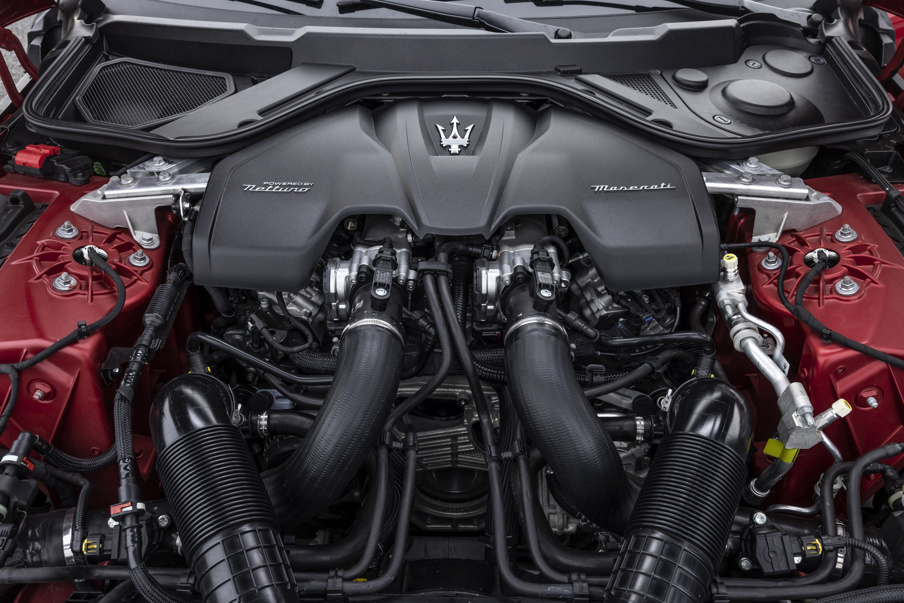
At the core of the Nettuno V6 is a philosophy that bridges the gap between Formula 1 technology and road car applications, with Maserati engineers aiming to create an engine that delivers the extreme performance characteristics of a racing car while maintaining the reliability and drivability required for everyday use. This dual-purpose design makes the Nettuno V6 a marvel of modern engineering.
The GranTurismo Modena is powered by a 490hp (365kW) version of the Nettuno V6 that, in a first for a Maserati GT, powers all four wheels enabling it to sprint to 100km/h in 3.9 seconds, while the top-spec GranTurismo and GranCabrio Trofeo uses a 550hp (410kW) version of the engine, also driving all four wheels, that reduces the 0-to-100 sprint to just 3.5 seconds.
The Trofeo’s enhanced performance is complemented by a more aggressive suspension setup and a sports exhaust system that amplifies the car’s belligerent aural presence. All variants come with an 8-speed automatic transmission, providing smooth and rapid gear changes.

Being a grand tourer, the new GranTurismo is designed to offer a blend of comfort and dynamic performance. The chassis is constructed from lightweight materials, including aluminium and high-strength steel, to improve rigidity while keeping weight in check. This construction, combined with adaptive dampers and air suspension, allows the GranTurismo to deliver a supple ride on long journeys while maintaining precise control during high-speed driving.
The car’s driving modes – Comfort, Sport, and, in the Trofeo model, Corsa – allow the driver to tailor the vehicle’s behavior to suit different driving conditions. In Comfort mode, the suspension softens, and the power delivery is smooth, making it ideal for everyday driving, while Sport mode sharpens the throttle response, stiffens the suspension, and opens up the exhaust for a more engaging driving experience.
Corsa mode, exclusive to the Trofeo, maximises performance settings for track-focused driving, offering the most aggressive setup.
Advanced driver assistance systems (ADAS) enhance safety and convenience, with features such as adaptive cruise control, lane-keep assist, blindspot monitoring, and automatic emergency braking are standard, ensuring a high level of safety.
As Maserati continues to evolve and adapt to the changing landscape of the automotive industry, the GranTurismo stands as a tribute to the brand’s history of stunning design and powerful performance, while also embracing new technology and ever-evolving customer preferences as the company heads into the future.
And the car that is spearheading that charge into the future is the Grecale.
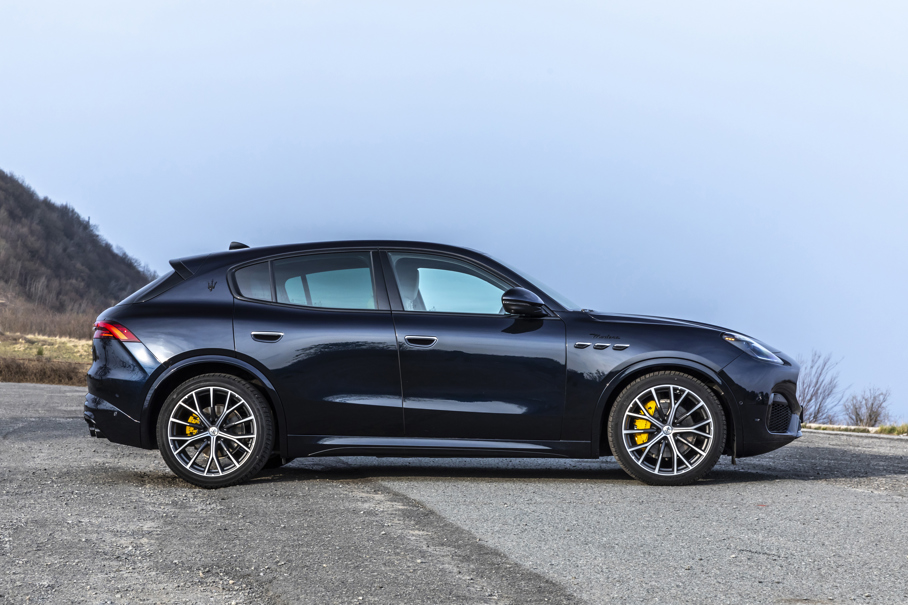
The introduction of the Grecale propels Maserati headlong into what is probably the most competitive arena there is: the medium SUV crossover market, a segment of the new car market where style, practicality, comfort, and sportiness intersect probably more than any other.
As such, the Grecale aims to offer the perfect blend of style, performance, and versatility, catering to a broader range of luxury SUV buyers.
The Grecale's design is a masterful fusion of Italian elegance and practical SUV proportions, effortlessly embodying Maserati's distinct design language, characterised by sleek lines, a sculpted profile, and a commanding road presence.
The side profile of the Grecale is defined by a streamlined silhouette, accentuated by muscular wheel arches and a roofline that gracefully slopes towards the rear, giving the vehicle a coupe-like appearance while maintaining the practicality of a traditional SUV.
Inside, the Grecale offers the same intoxicating blend of craftsmanship and premium materials that makes the GranTurismo so special, with high-quality leather, wood, and aluminium trim creating an environment of sophistication and comfort. With ample room for passengers and cargo, the Grecale is a versatile choice for both daily commuting and long-distance travel.
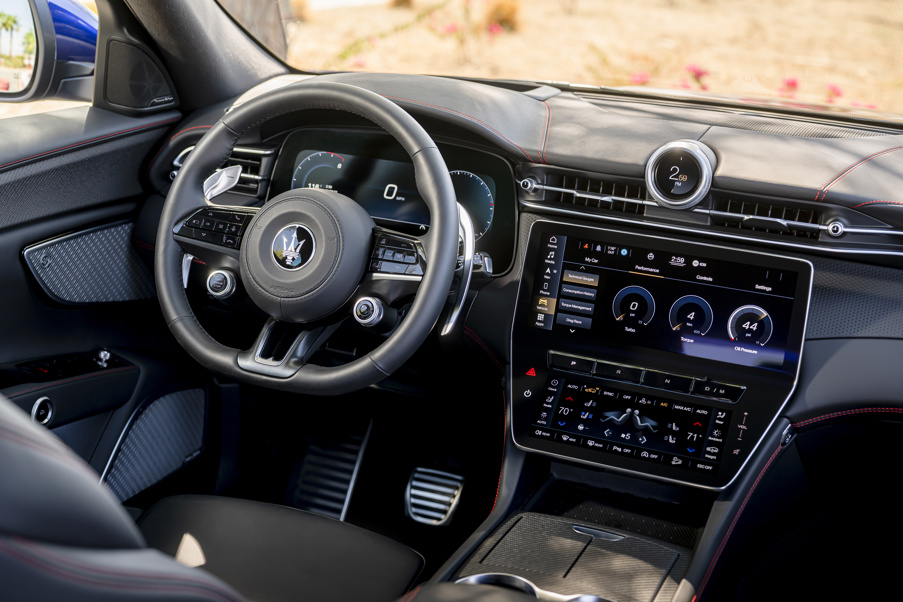
The cabin is designed to provide a cocoon of comfort and refinement, with seats that are upholstered in premium leather, while the available Alcantara and carbon fibre trim add a sporty touch.
The centre of the dashboard is dominated by the Maserati Intelligent Assistant (MIA) infotainment system, which features a large touchscreen display and provides seamless connectivity, navigation, and access to a host of entertainment options.
The infotainment system supports Apple CarPlay, Android Auto, and Bluetooth connectivity, while a premium sound system delivers a rich and immersive listening experience.
Beneath its elegantly sculpted bonnet, the Grecale offers a range of powertrains designed to deliver exhilarating performance and frugal commuting in one package.
The Grecale’s model lineup includes the GT, which is powered by a 300hp (220kW) mild-hybrid 2.0-litre turbocharged four-cylinder engine and the Modena, which ups the ante with a 330hp (242kW) version of the four-cylinder engine.
For those seeking even more performance, the Grecale Trofeo sits at the top of the range, boasting a 530hp (390kW) version of the Nettuno 3.0-litre V6 twin-turbo engine that will propel the Grecale Trofeo from 0 to 100km/h in just 3.9 seconds, with a top speed of 285km/h, making it one of the fastest SUVs in its class.
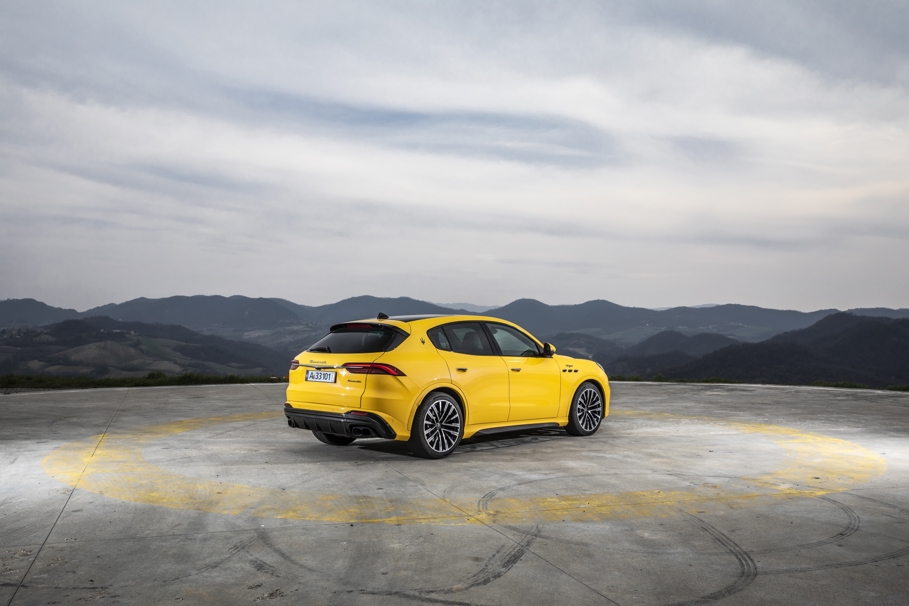
But the Grecale's performance is not just about raw power; being a true Maserati it also offers exceptional handling and driving dynamics.
Like the GranTurismo that it shares its DNA with, Maserati has equipped the Grecale with an advanced all-wheel-drive system, adaptive air suspension, and a range of driving modes that allow the driver to tailor the vehicle's behavior to their preferences.
The Maserati Grecale is engineered to provide a balance between sporty handling and comfort, making it a versatile companion for various driving scenarios.
The advanced suspension system, featuring double-wishbone front and multi-link rear setups, ensures precise handling and a smooth ride. The optional adaptive air suspension (standard on Trofeo) further enhances the driving experience by allowing the driver to adjust the ride height and stiffness to suit different driving conditions.
The Grecale's steering is responsive and well-weighted, offering excellent feedback to the driver that, combined with Maserati's excellent Skyhook electronic damping system, ensures that the Grecale remains composed and agile, even during spirited driving. The braking system features large, ventilated discs and performance-oriented calipers for strong and consistent stopping power.
Whether navigating city streets, cruising on the open road, or tackling winding roads, the Grecale delivers a driving experience that is both engaging and refined, while its advanced driver assistance systems enhance safety and convenience.
The introduction of the Grecale represents a significant step for Maserati as it expands its lineup and embraces new market segments. It embodies the brand's commitment to innovation, performance, and luxury while catering to the growing demand for high-end SUVs. The Grecale not only strengthens Maserati's position in the luxury SUV market but also sets the stage for the brand's future developments.
The next major step into the future comes with the introduction of the fully electric Folgore models into the Grecale, GranTurismo and GranCabrio line ups.

With Folgore being the Italian word for lightning, the electrified models promise truly epic performance to back up their green credentials.
The Grecale Folgore packs a big 105kWh battery and dual electric motors, with one on the front axle and one on the rear for AWD. With each motor producing 205kW, the Grecale Folgore has a combined power output of 410kW and 820Nm and will rocket to 100km/h in 4.1 seconds.
Maserati claims a range of up to 500km on a charge, with a maximum charge rate of 150kW and a 20 to 80 per cent charge taking 29 minutes.
While the numbers the Grecale Folgore packs are impressive enough, the upcoming fully electric versions of the GranTurismo and GranCabrio take things to another level again in terms of power and sheer performance.

Like the Grecale Folgore, the coupe and convertible models are still both AWD, but get an additional electric motor on the rear axle. With each of the three motors capable of producing up to 402hp (300kW), the GranTurismo Folgore has a total combined power output of a staggering 751hp (560kW) and 1350Nm of torque, which is good enough to propel it from 0 to 100km/h in just 2.7 seconds.
The large 92kWH battery pack is fitted in a T-formation under the floor of the Folgore, so no interior space is sacrificed, while the 800-volt electrical architecture allows for charging speeds as blazingly fast as the car itself – up to 270kW via a DC fast charger, which will see it charge from 20 to 80 per cent in just 18 minutes, while a five minute fast-charge will add 100km of range.
But, of course, while the GranTurismo upholds proud tradition, the Grecale blazes a new trail and the Folgore models of both set a bold course for the future, a manufacturer that is synonymous with luxury, performance, and Italian craftsmanship like Maserati needs a true flagship. And that is where the spectacular Maserati MC20 supercar comes in.
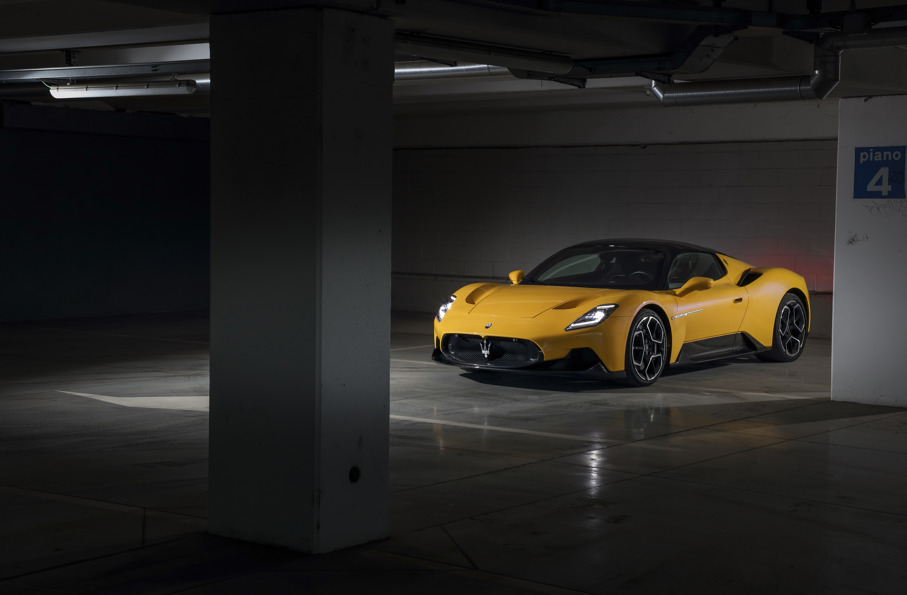
First unveiled in 2020, with the open-top Cielo variant arriving in 2022, the MC20 marks a significant milestone in Maserati's illustrious history, blending advanced engineering, cutting-edge technology, and stunning design into a package that has already captivated automotive enthusiasts the world over.
Characterised by a masterful balance of elegance and aggression, the MC20’s sleek and aerodynamic profile is crafted to enhance performance while exuding an aura of refined sophistication. Every detail of the MC20 is meticulously crafted to serve both form and function – the butterfly doors not only add a dramatic flair but also improve aerodynamics and accessibility, while the rear end features high-mounted exhausts and a pronounced diffuser, further emphasising its performance credentials.
At the heart of the MC20 lies the Nettuno twin-turbo V6, with the remarkable engine debuting in the supercar in 2020.

Nestled behind the cabin, the mid-mounted version of the Nettuno packs an even bigger punch in the MC20 than it does in any other model, sending a formidable 630 horsepower (470kW) of power and 730Nm of torque to the rear wheels via an 8-speed dual clutch transmission.
This potent powerplant propels the MC20 from 0 to 100km/h in just 2.9 seconds, with a top speed exceeding 325km/h. The car’s lightweight construction, achieved through the extensive use of carbon fibre and other advanced materials, contributes to its remarkable acceleration and agility.
The MC20’s prodigious performance is matched by its superb handling and driving dynamics. Double-wishbone suspension at both the front and rear is paired with adaptive dampers to allow the driver to adjust the suspension settings to suit various driving conditions and is optimised for maximum stability and cornering precision.
Maserati’s Vehicle Dynamic Control Module (VDCM) includes a number of driving aids and systems, such as traction control, stability control, and launch control, while carbon-ceramic brakes offer immense stopping power, giving drivers the confidence to push the car to its limits.
Inside the MC20, Maserati has created a driver-focused cockpit that blends luxury with advanced technology, with ergonomics playing a crucial role in its design. A minimalist design approach keeps all the controls within easy reach, while a 10-inch digital instrument cluster and a 10-inch touchscreen infotainment system powered by Maserati’s Intelligent Assistant (MIA) provide the driver with all relevant information.
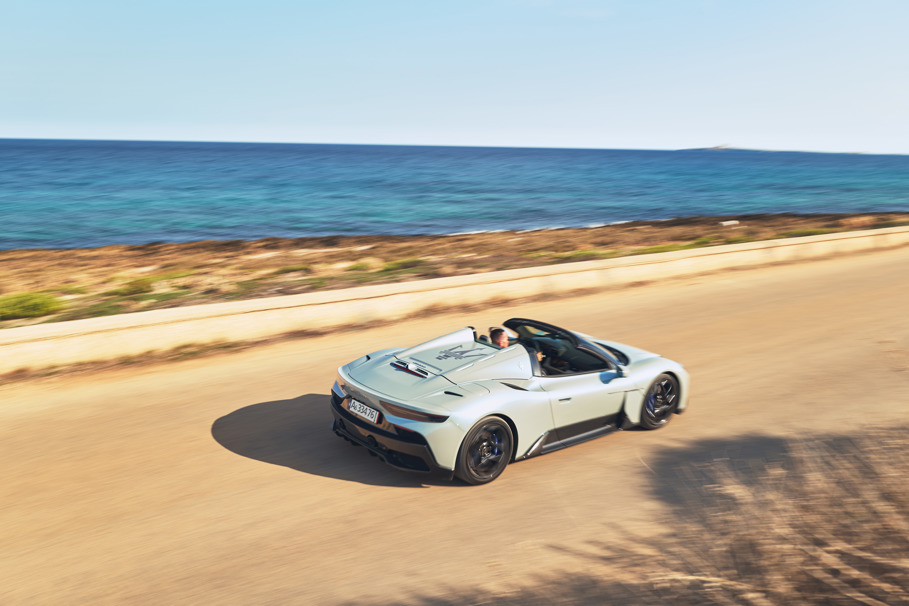
The MC20 represents a new chapter in Maserati’s storied history. It is the first supercar from the brand in over a decade, following the iconic MC12, and not only pays homage to its predecessor but also serves as a platform for future developments with Maserati announcing plans to introduce an all-electric version of the MC20 that is expected to offer similar performance characteristics, with the added benefits of zero emissions and silent operation.
Find out more about the Maserati range at Maserati.com/nz




